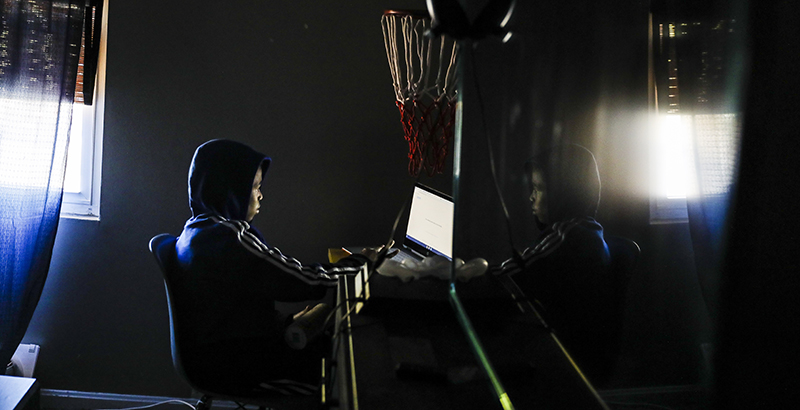Analysis: Survey Finds More Than Half of Parents Say Their Kids Are Learning Remote — and the Negative Effects Are Hitting Hard

It’s reasonable to think that students would be attending schools for in-person instruction where COVID-19 is not spreading rapidly.
But a recent national survey of parents conducted by analysts at the Harvard-based journal Education Next finds the opposite: Students are more likely to attend schools where COVID is spreading most rapidly.
This suggests that the severity of a community’s COVID crisis seems to have little effect on a district’s decision to open schools for in-person learning.
This survey, taken in November and December of a nationally representative sample of 2,155 American parents with children in kindergarten through 12th grade, provides details on other aspects of how schools are adapting to the pandemic — especially the stark differences in parent responses across ethnic, economic and partisan lines. And the story it tells about the pandemic’s continuing effect is not good, especially for young people of color.
More than half of parents (53 percent) report that remote learning is the primary way their child is receiving instruction, with 28 percent saying their children are in in-person classrooms and 19 percent saying children are learning via a hybrid model.
Parents of children from low-income (64 percent), Black (66 percent) and Hispanic (64 percent) families are far more likely than parents of white (34 percent) and high-income (48 percent) students to report their child is receiving fully remote instruction.
Children of parents identifying as Republicans are more likely to have access to full in-person instruction (51 percent) and to choose to have their child participate (39 percent) than children of those identifying as Democrats (35 percent and 22 percent).
The survey also asked about pandemic pods, in which families organize in small groups to share responsibility for things like child care and instruction.
Parents of just under 6 percent of students — around 3 million — participate in a pod, though children from low-income families are almost twice as likely (9 percent) to participate in one than students from high-income families (5 percent).
What do parents think about the academic, social and physical effects on their child of what schools are doing?
They say the negative effects are far greater on social relationships and physical fitness than on their child’s academic knowledge and emotional well-being. Parents of children attending schools in person report the least overall negative impacts, with these effects more likely to fall on students of low-income, Black, and Hispanic parents who have higher rates of learning remotely or via a hybrid approach.
There’s some good news from parents whose children are learning via fully remote learning: They believe that teacher engagement has improved greatly over a year ago, when virtual instruction began.
Parents report teachers hold more whole-class meetings at least several times a week (91 percent, up from 46 percent); have more frequent one-on-one interaction with students (35 percent, up from 19 percent); assign required work on a daily basis (75 percent, up from 45 percent) and provide feedback to students on completed assignments daily (42 percent, up from 21 percent) or several times a week (30 percent, up from 27 percent).
But 60 percent of parents say that even with these improvements, children are learning less than “they would have learned if there had not been a pandemic.” Again, the situation is worse for parents of children who are using the hybrid (75 percent) or fully remote (66 percent) approaches. Since many more low-income, Black and Hispanic students are receiving these two forms of instruction, they bear the brunt of what parents see as a learning loss.
Parents also were asked whether their child had attended the same school this year as in the previous year. Slightly more than one in five (22 percent) said their child was at a new school. A significant number of these changes were unrelated to the pandemic — e.g., a student moved from elementary to middle school.
However, parents of 10 percent of students new to private schools and 14 percent new to charter schools made a switch because of dissatisfaction with their school’s COVID response.
In a comparison of different types of schools, private school parents were more likely to report in-person school attendance, to be “very satisfied” with their children’s education and to be less likely to say their child is “learning less” than parents of private and charter school students.
These parent views on how schools have adjusted to COVID-19 should give pause to K-12 policymakers and other stakeholders. They are especially troubling since, once again, they suggest the burden of COVID-19’s negative effects fall on low-income children of color. This information should be a clarion call to get young people back into in-person learning.
Bruno V. Manno is senior adviser for the Walton Family Foundation’s K-12 education program. Walton Family Foundation provides financial support to The 74.
Get stories like these delivered straight to your inbox. Sign up for The 74 Newsletter

;)
